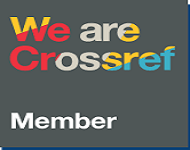E-Module Speaking Based Gamification to Improve Students’ Intercultural Understanding
DOI:
https://doi.org/10.33394/jp.v10i1.6399Keywords:
E-Module, Speaking, Gamification, Intercultural Understanding.Abstract
References
Baker, W. (2012). From cultural awareness to intercultural awareness: Culture in ELT. ELT Journal, 66(1). https://doi.org/10.1093/elt/ccr017
Caponetto, I., Earp, J., & Ott, M. (2014). Gamification and education: A literature review. Proceedings of the European Conference on Games-Based Learning, 1(2009), 50–57.
Chia, A., & Hung, Y. (2018). Gamification as Design Thinking. International Journal of Teaching and Learning in Higher Education, 30(3), 549–559.
Daniel, B. K., & Harland, T. (2018). Qualitative data analysis. Higher Education Research Methodology, 98–110. https://doi.org/10.4324/9781315149783-10
Deterding, S., Khaled, R., Nacke, L., & Dixon, D. (2011). Gamification: toward a definition. Chi 2011.
Dichev, C., & Dicheva, D. (2017). Gamifying education: what is known, what is believed and what remains uncertain: a critical review. In International Journal of Educational Technology in Higher Education (Vol. 14). https://doi.org/10.1186/s41239-017-0042-5
Fitriani, D. E. N., Amelia, E., & Marianingsih, P. (2017). Penyusunan Modul Pembelajaran Berbasis Sains Teknologi Dan Masyarakat (Stm) Pada Konsep Bioteknologi (Sebagai Bahan Ajar Siswa SMA Kelas XII). Biosfer: Jurnal Pendidikan Biologi, 10(2), 60–72. https://doi.org/10.21009/biosferjpb.10-2.8
Habibah, S. O. (2019). Pengembangan Bahan Ajar Lembar Kerja Peserta Didik (Lkpd) Berbasis Budaya Lokal Lampung Materi Seni Rupa Mata Pelajaran Seni Budaya Dan Prakarya (Sbdp) Kelas V Sd/Mi. In Universitas Islam Negeri Raden Intan Lampung.
Hamari, J., Koivisto, J., & Sarsa, H. (2014). Does gamification work? - A literature review of empirical studies on gamification. Proceedings of the Annual Hawaii International Conference on System Sciences. https://doi.org/10.1109/HICSS.2014.377
Jusuf, H. (2016). Penggunaan Gamifikasi dalam Proses Pembelajaran. Jurnal TICOM, 5(1), 1–6. Retrieved from https://media.neliti.com/media/publications/92772-ID-penggunaan-gamifikasi-dalam-proses-pembe.pdf
Kho, S., Pradana, S., Raden, U., & Lampung, I. (2019). A Need Analysis English for Business Course. English Education: Jurnal Tadris Bahasa Inggris, 12(2), 139–146.
Komikesari, H., Mutoharoh, M., Dewi, P. S., Utami, G. N., Anggraini, W., & Himmah, E. F. (2020). Development of e-module using flip pdf professional on temperature and heat material. Journal of Physics: Conference Series, 1572(1). https://doi.org/10.1088/1742-6596/1572/1/012017
Lwin, S. M. (2016). Promoting Language Learners’ Cross-Cultural Awareness Through Comparative Analyses of Asian Folktales. TEFLIN Journal - A Publication on the Teaching and Learning of English, 27(2), 166. https://doi.org/10.15639/teflinjournal.v27i2/166-181
Majuri, J., Koivisto, J., & Hamari, J. (2018). Gamification of education and learning: A review of empirical literature. CEUR Workshop Proceedings, 2186(GamiFIN), 11–19.
Marzuqi, A., & Sihkabuden. (2016). The Development Of Science Learning Module For Childrent With Hearing Impairment. Jurnal P3LB, 3(1), 72–76.
Maulana, A. (2020). Cross Culture Understanding in EFL Teaching: An Analysis for Indonesia Context. Linguists : Journal Of Linguistics and Language Teaching, 6(2), 98. https://doi.org/10.29300/ling.v6i2.3460
Nisa, H. A., Wahyu, R., & Putra, Y. (2020). Efektivitas E-Modul dengan Flip Pdf Professional Berbasis Gamifikasi Terhadap Siswa SMP. 05(02), 13–25.
Noto, M. S. (2014). Perangkat Pembelajaran Matematika Berbasis Smart. Jurnal Ilmiah Program Studi Matematika STKIP Siliwangi Bandung, 3(1), 18–32.
Park, S., & Kim, S. (2021). Is sustainable online learning possible with gamification?—the effect of gamified online learning on student learning. Sustainability (Switzerland), 13(8). https://doi.org/10.3390/su13084267
Saleem, A. N., Noori, N. M., & Ozdamli, F. (2022). Gamification Applications in E-learning: A Literature Review. Technology, Knowledge and Learning, 27(1), 139–159. https://doi.org/10.1007/s10758-020-09487-x
Setiyani, Putri, D. P., Ferdianto, F., & Fauji, S. H. (2020). Designing a digital teaching module based on mathematical communication in relation and function. Journal on Mathematics Education, 11(2), 223–236. https://doi.org/10.22342/jme.11.2.7320.223-236
Simon, E. (2021). Issn 2775-507x. (2003).
Sunardi Y. (2019). The Importance of Cross-Cultural Understanding in Englishlanguage Learning. The 3rdIndonesian International Conference on Linguistics, Language Teaching, Literature and Culture.
Urh, M., Vukovic, G., Jereb, E., & Pintar, R. (2015). The Model for Introduction of Gamification into E-learning in Higher Education. Procedia - Social and Behavioral Sciences, 197(February), 388–397. https://doi.org/10.1016/j.sbspro.2015.07.154
Werbach, K. (2014). (Re) Defining gamification: a process approach, persuasive technology. Lecture Notes in Computer Science, 8462, 266–272.
Xiong, J., Pan, S., & Qiao, Z. (2017). Structure and microwave absorption properties of (Pr,Dy)Ni4Fe alloy. Journal of Magnetism and Magnetic Materials, 426(1), 725–728. https://doi.org/10.1016/j.jmmm.2016.10.135
Downloads
Published
How to Cite
Issue
Section
Citation Check
License
License and Publishing Agreement
In submitting the manuscript to the journal, the authors certify that:
- They are authorized by their co-authors to enter into these arrangements.
- The work described has not been formally published before, except in the form of an abstract or as part of a published lecture, review, thesis, or overlay journal.
- That it is not under consideration for publication elsewhere,
- That its publication has been approved by all the author(s) and by the responsible authorities tacitly or explicitly of the institutes where the work has been carried out.
- They secure the right to reproduce any material that has already been published or copyrighted elsewhere.
- They agree to the following license and publishing agreement.
Copyright
Authors who publish with Jurnal Paedagogy agree to the following terms:
- Authors retain copyright and grant the journal right of first publication with the work simultaneously licensed under a Creative Commons Attribution License (CC BY-SA 4.0) that allows others to share the work with an acknowledgment of the work's authorship and initial publication in this journal.
- Authors are able to enter into separate, additional contractual arrangements for the non-exclusive distribution of the journal's published version of the work (e.g., post it to an institutional repository or publish it in a book), with an acknowledgment of its initial publication in this journal.
- Authors are permitted and encouraged to post their work online (e.g., in institutional repositories or on their website) prior to and during the submission process, as it can lead to productive exchanges, as well as earlier and greater citation of published work.
Licensing for Data Publication
-
Open Data Commons Attribution License, http://www.opendatacommons.org/licenses/by/1.0/ (default)






